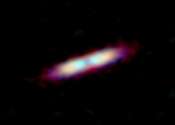A head start for planet formation? Evidence of large dust grains in star-forming regions
A group of Victoria-based scientists have made a discovery suggesting that the building blocks of planets may form earlier than previously thought. UVic astronomer, Mike Chen, presented the group's research at a Canadian ...









